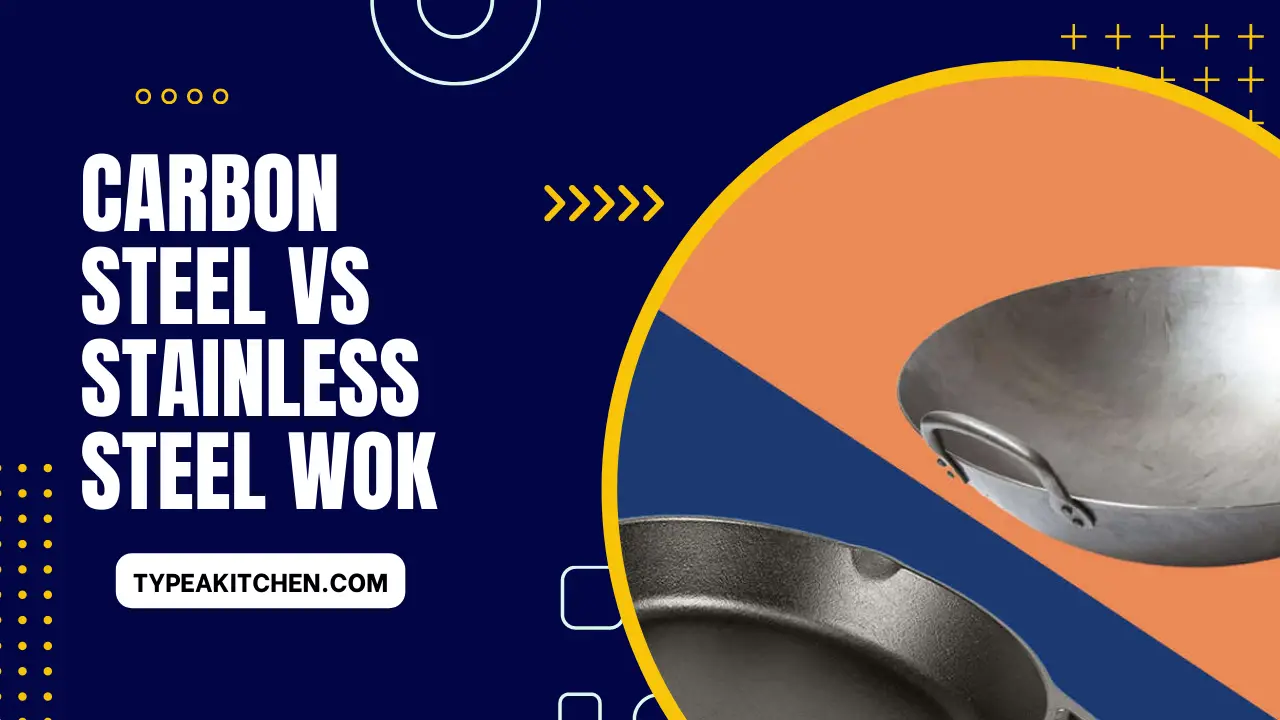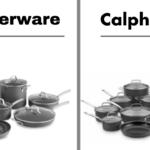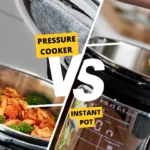Carbon steel woks are more traditional and preferred by individuals who cook with their wok on a burner. Carbon steel is also superior to stainless steel because it heats up faster, keeps the heat longer, and is far less expensive to purchase.
Stainless steel woks have recently gained popularity since they are non-reactive to food and easy to clean because food does not attach to them. Stainless steel, on the other hand, is not ideal for stovetop use since it must be heated at a considerably higher temperature than carbon steel, making stoves hotter and increasing the danger of food burning. Furthermore, because stainless steel is less conductive than carbon steel, heat may take longer to reach all regions of the wok.
Carbon Steel vs Stainless Steel Wok
Similarities:
- Both are great for stir-frying
- Both can be used over open flames (campfires, stoves, etc.)
Differences:
Carbon Steel
- heats up faster and holds heat longer than stainless steel
- more conductive than stainless steel; good at evenly distributing heat throughout the wok
- It heats up to higher temperatures than stainless steel, making it easier to create “wok hay” in less time (melting/burning of food is significantly more likely) (-carbon steel has a nonstick coating applied when purchased new, which ultimately fades off after use/cleaning)
Stainless Steel
- less conductive than carbon steel; requires significantly higher temperatures to be heated (stovetops are hotter and more difficult to regulate) (-Stainless steel has a higher risk of scorching your food than carbon steel) (it takes longer for the heat to reach all areas of the wok)
- non-reactive, thus food does not taste metallic when cooked in a stainless steel wok (-carbon steel is reactive with certain foods, resulting in off flavours that cannot be wiped away because it permeates the entire wok) Only use on the stovetop or in the oven! Dishwasher safe (no need to scrub!) storage and serving Safe for stovetop/hand washing (no scrubbing required!)
What is Carbon Steel?
Carbon steel is a very thin layer of carbon entrapped inside the steel’s thickness. Carbon steel woks are additionally factory-coated with cooking oil to avoid rusting during shipping/delivery. After a while of using
- Comes pre-seasoned (ready to use as soon as you bring it home)
- Manufacturers spray it with oil when they make it, so no additional seasoning is required
- Can be used on gas stovetops or over open flames
Pros:
- Heats up to greater temperatures, allowing for better “wok hay”
- Retains heat longer, allowing you to use it at higher degrees for stir-frying without having to reheat
Cons:
- A wet/unused wok will rust over time (more likely on gas stovetops)
- “Seasoning” will wear off with use/repeated washing; re-seasoning is required after each use.
What is Stainless Steel?
Stainless steel woks are substantially thicker than carbon steel woks they are often two to three times thicker. A layer of nickel or chromium is fused with the stainless steel, preventing rusting/corrosion and offering resistance to acids found in foods such as tomatoes and vinegar.
- Cannot be used on gas stovetops (only electric stoves) • -Manufacturers do not coat it with oil when it is created; must be seasoned before use
Pros:
- Wok does not absorb flavors from other foods, so your food will taste more like the original dish.
- Wok will not rust if kept wet/unused for an extended period of time (since it is not reactive to specific foods).
Cons:
- The metallic flavor from steel wok will begin to emerge and affect food.
- Heating time is much longer than carbon steel and takes a while for the heat to reach all areas of the wok. Not ideal for stir-frying.
Which one should I choose?
Although carbon steel woks may reach higher temperatures and keep heat longer than stainless steel works, using a stainless steel wok is less likely to result in metal-flavored food.
Because stainless steel woks do not heat up as quickly or as hot as carbon steel, they are only suggested for use on electric stovetops (not gas).
Choose stainless steel if you want an environmentally friendly alternative! Manganese and other compounds
It can even save you money because carbon steel woks are often less expensive than stainless steel woks.
Both types of wok can be used on gas stoves, however, carbon steel will corrode over time. To avoid rusting, always fully dry your wok after washing it! If you prefer to cook with stainless steel, don’t keep it damp or unused for lengthy periods of time, or the material may rust.
Stainless steel is also dishwasher safe, making cleaning this type of wok faster and easier – no need to scrub! Carbon steel should only be hand cleaned! After each usage, properly clean your carbon/stainless steel woks with hot water and detergent (no seriously this is important). Allow to completely dry before storing.
If you want to make an investment, go with stainless steel! It costs more but lasts longer and is better for the environment. Choose carbon steel as an eco-friendly alternative (without the price tag) because it does not emit any chemicals into the environment like its stainless steel counterpart.
Personal preference governs the choice between carbon steel and stainless steel woks. Some people like the metallic taste of carbon, while others can’t tell the difference – both may give meals a fantastic “wok hay” flavor (breath of the wok).
If you plan on washing and drying your new or used cooking utensil by hand, either material will retain its ‘seasoning.’ Caron steel is less expensive, and pre-seasoned carbon steel woks are simpler to find than vice versa. If you don’t have time to hand-wash it, use stainless steel!
FAQs:
1-What temperature should I use when cooking?
Carbon steel woks, on average, take less time to achieve the desired temperature (typically around 450° F to 480° F). Preheat the pan until a drop of water skitters over the surface of the stainless steel.
2-How can I avoid rusting?
Season again, and always fully dry your wok after cleaning! Also, do not leave wet/unused carbon or stainless steel in humid regions for extended periods of time, as this increases the danger of rusting. 3. Are both types of woks suitable for use on gas stovetops? Yes, but if left unused, carbon steel will rust with time, so make sure to properly dry it after washing to avoid rusting. Stainless steel is dishwasher safe, making it faster and easier to clean, but it may be less responsive on gas stovetops with a larger flame since stainless steel does not heat up as quickly as carbon steel.
3-What is the best method for storing my wok?
Use wood utensils to prevent the seasoning from wearing off! Wash your carbon/stainless steel woks properly after each use, and don’t leave wet or damp woks in humid environments for too long (i.e: next to windows). Always allow to thoroughly dry before storing! Carbon steel is an environmentally friendly choice because it does not emit any toxins into the environment.
4-Are carbon steel woks OK for use on glass stovetops?
Stainless steel is preferred for glass stovetops because it is slippery,’ allowing food to slide off more easily – but you can use any type of Chinese cooking vessel with a glass top depending on your personal preference! We suggest stainless steel since it is dishwasher safe and has greater food release qualities.
5-What are the benefits of a carbon steel wok over a stainless steel wok?
Carbon steel warms up faster and retains its temperature for a longer period of time than stainless steel. Pre-seasoning carbon steel woks will give your dish a metallic flavor that some people love. Because carbon steel might rust, it must be thoroughly dried/washed after each usage. Stainless steels are environmentally friendly, dishwasher safe, and much more expensive than their counterparts – yet they do not require seasoning! Instead of purchasing another stainless steel, pick carbon steel as an option.
“Does the function or handling of a used or new Chinese cooking utensil differ?”
No! Just make sure to season it first. If the wok has already been seasoned, there is no need to season it.
Conclusion:
Both types of woks have advantages and disadvantages depending on what you’re searching for in a wok! Carbon steel consumes less time to heat up but more effort to keep the seasoning.




